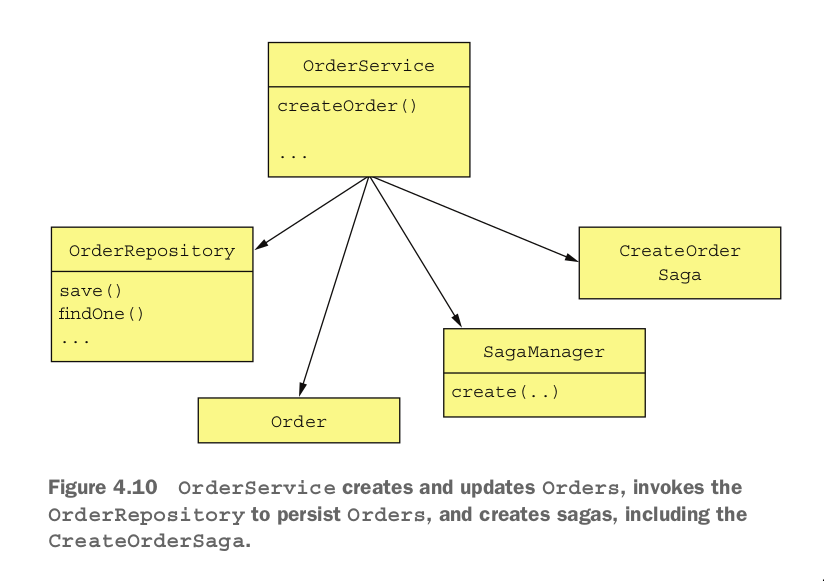Saga patterns
The trouble with distributed transactions
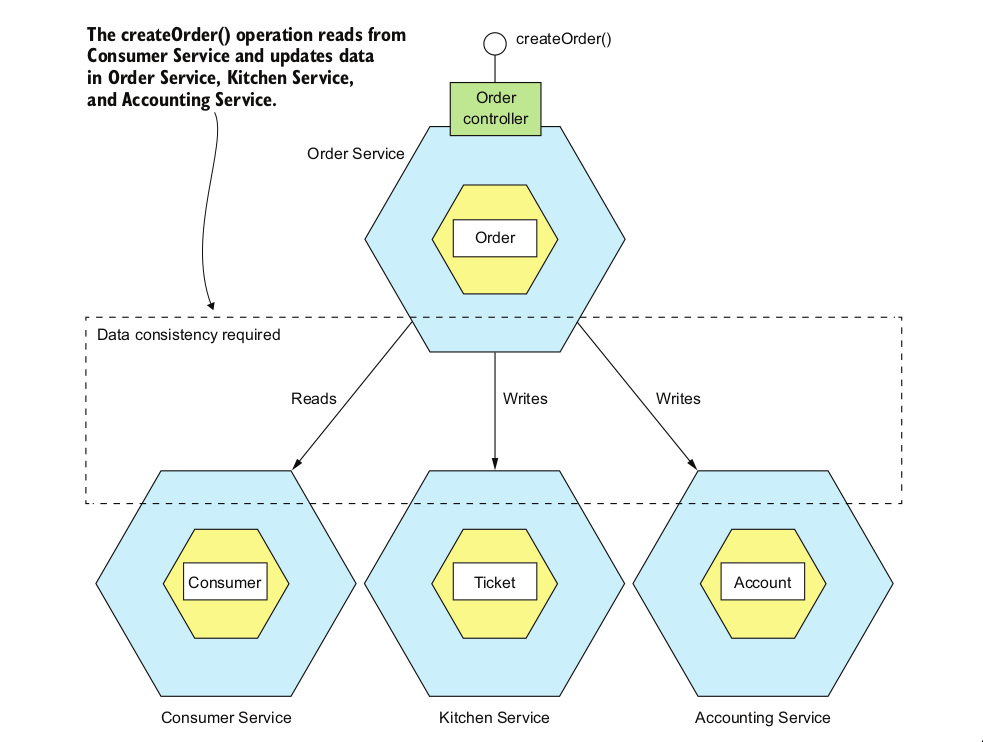
- In order for a distributed transaction to commit, all the participant services must be available, hence reduce availability
Using Saga pattern to maintain data consistency
- Saga is a sequence of local transactions
- Each local transaction updates data within a single service using familiar ACID transaction frameworks
Example of CreateOrder saga
- The order service implements
createOrder()operation using saga. - Saga’s first local transaction is initiated by the external request to create an order
- The other five local transactions are each triggered by completion of the previous one
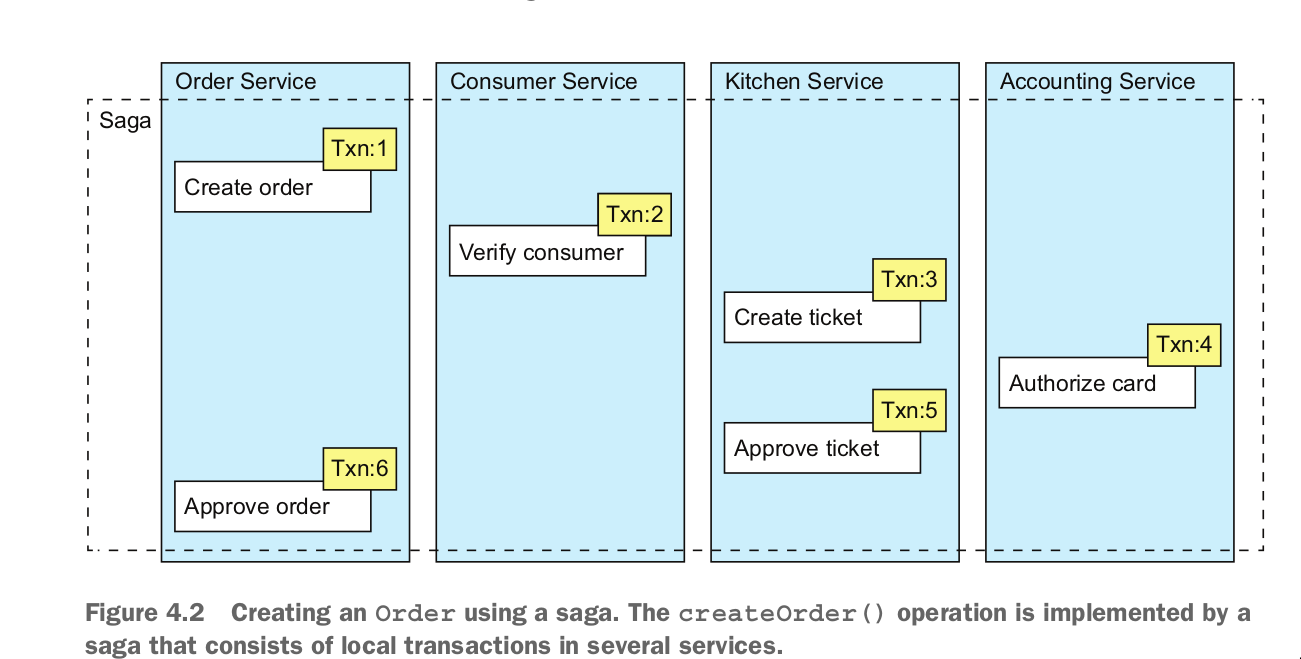
Saga use compensating transactions to roll back changes
- The business logic can easily roll back a transaction if it detects the violation of a business rule
- If a step failed, the application must explicitly undo the changes made by the first three steps. You must write what are known as compensating transaction
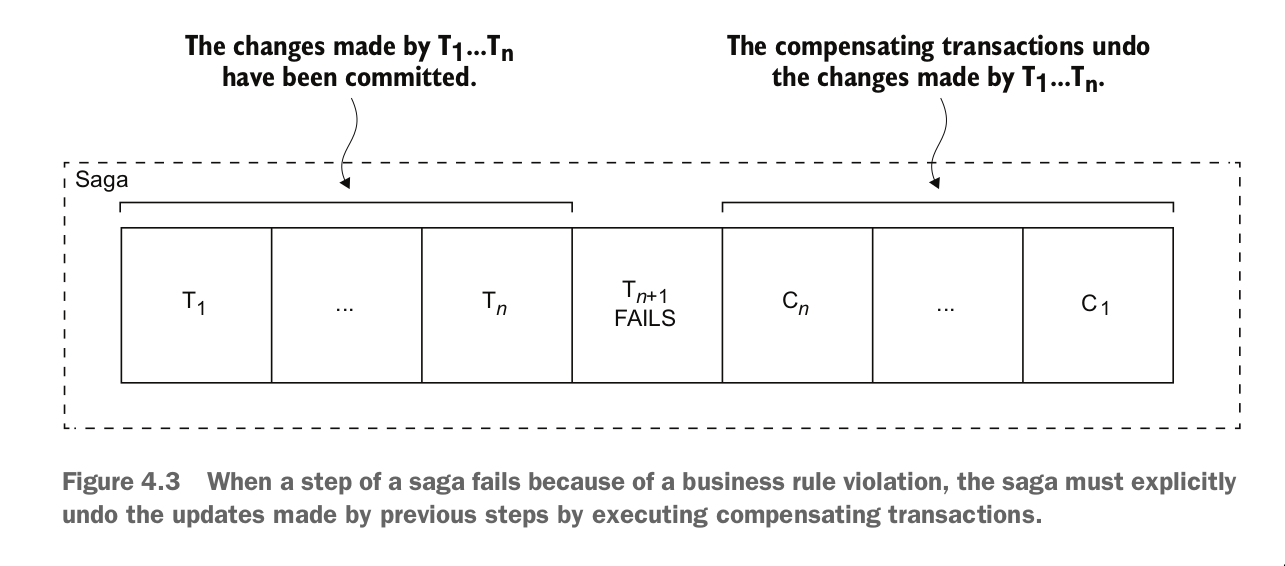
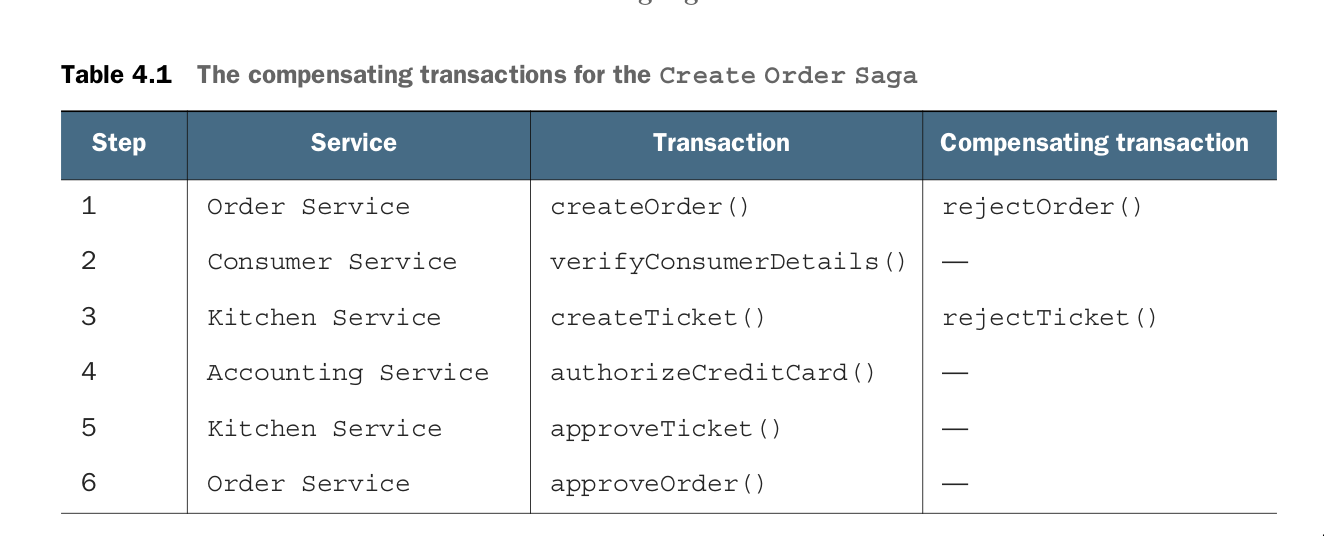
Coordinating sagas
A saga's implementation consists of logic that coordinate the steps of the saga.
There are two different ways to structure a saga's coordination logic:
- Choreography: Distribute the decision making and sequencing among the saga participants. They primarily communicate by exchanging events.
- Orchestration: A saga orchestrator sends command messages to saga participants telling them which operations to perform
Choreography-based sagas(event-based)
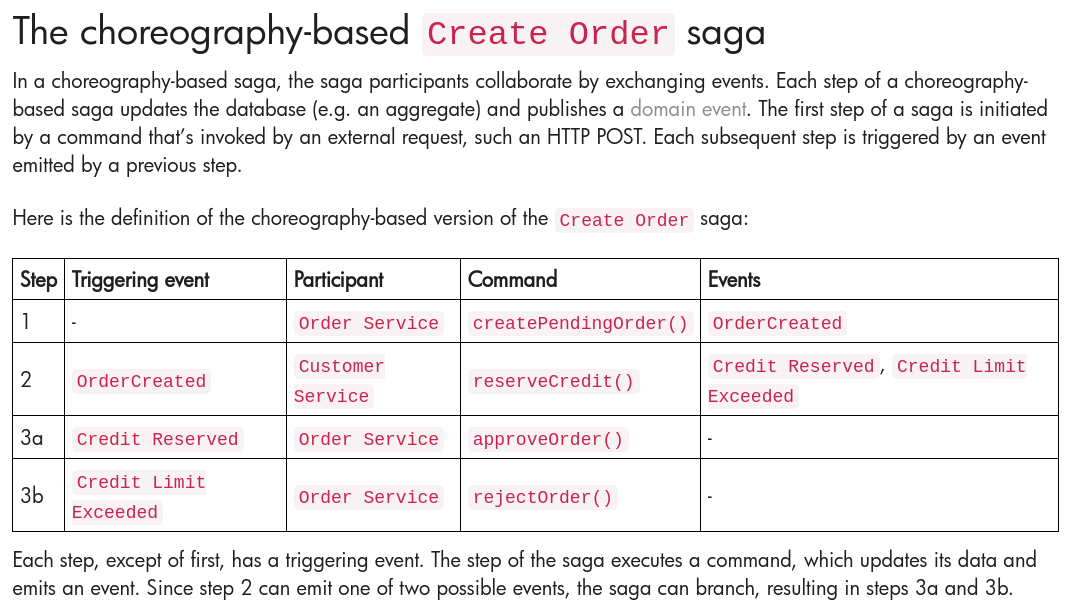
- the participants communicate by exchange events
- Each participant, start with
OrderService, updates its database and publishes an event that triggers the next participant
The sequence of events for a CreateOrder() action is as follows:
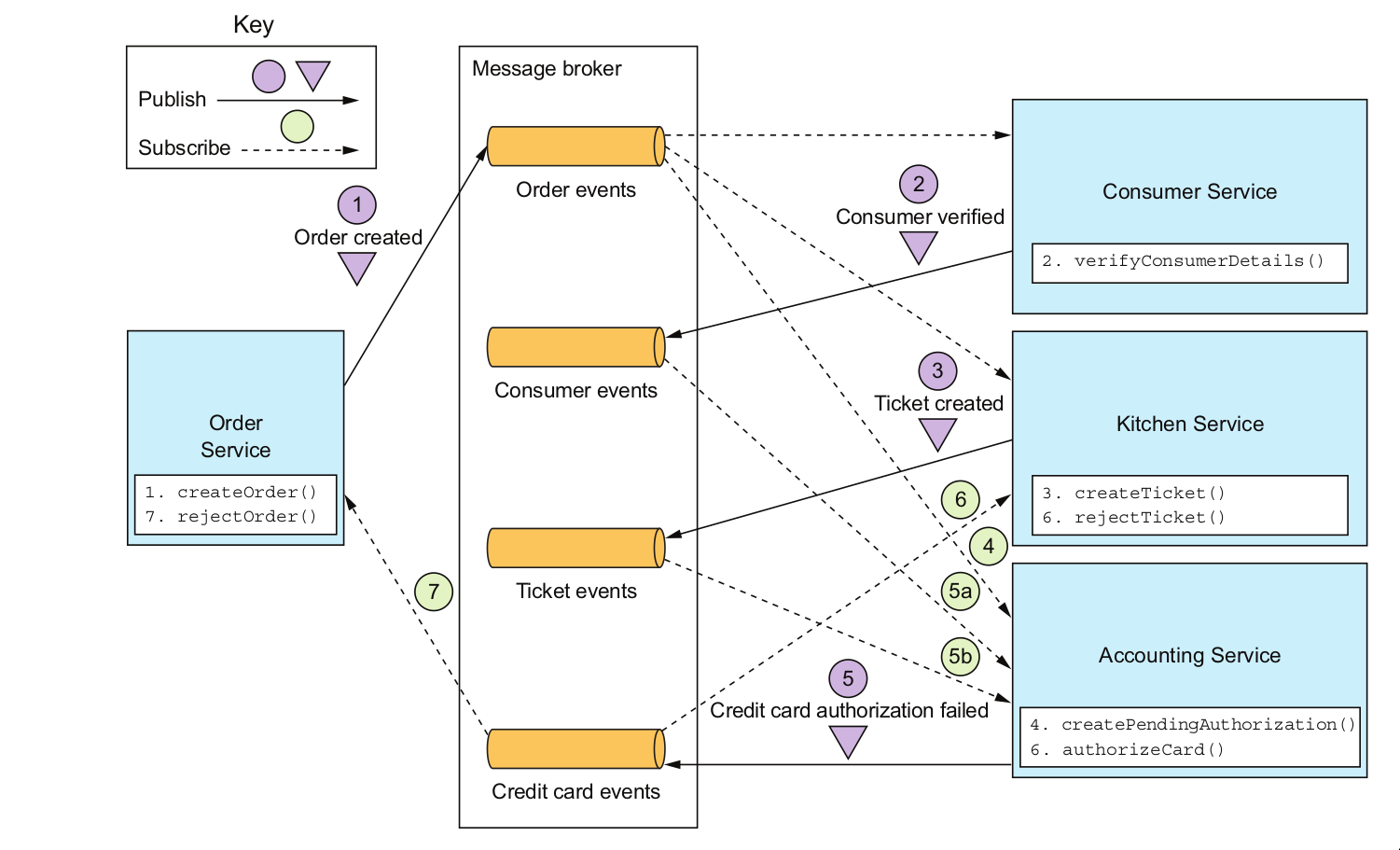
Ensure reliability
- Saga participants must update the database and publish events as part of a database transaction
- Saga participants must be able to map each even that it receives to its own data. Every events much contain a
correlation id
Benefits
- Simplicity: Services publish events when they create, update, or delete business objects.
- Loose coupling: The participants subscribe to events and don’t have direct knowledge of each other
Drawbacks
- More difficult to understand
- Cyclic dependencies between the services such as
Order Service -> Accounting Service -> Order Service - Risk of tight coupling:
Orchestration(command based)
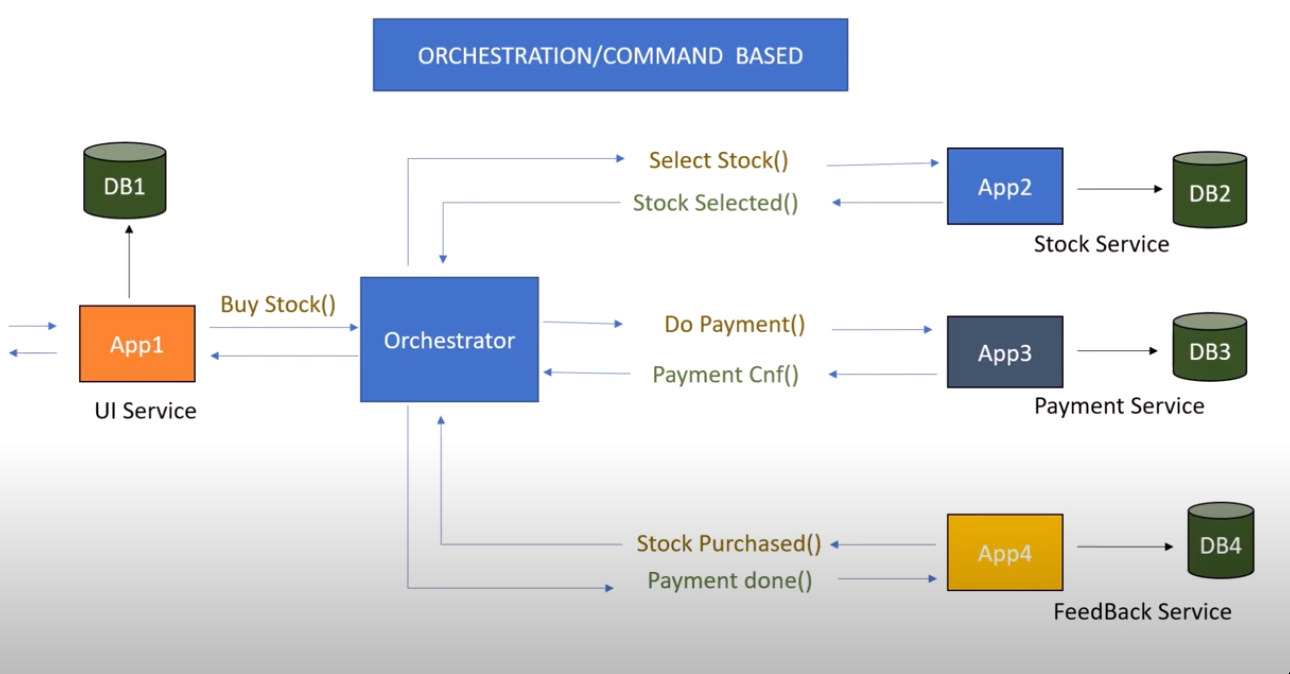 The saga orchestrator communicates with the participants using command/async reply-style interaction.
The saga orchestrator communicates with the participants using command/async reply-style interaction.
For example:
Order service create an Order and Create Order Saga orchestrator.
Saga orchestrator send
Verify Consumercommand toConsumer ServiceConsumer Servicereplies with aConsumer VerifiedmessageThe saga orchestrator send
Create Ticketcommand toKitchen ServiceKitchen Servicereplies with a Ticket Created message.The saga orchestrator sends an Authorize Card message to Accounting Service .
Accounting Service replies with a Card Authorized message.
The saga orchestrator sends an Approve Ticket command to Kitchen Service
The saga orchestrator sends an Approve Order command to Order Service .
In final step, the saga orchestrator sends a command messsage to Order service, even though it's a component of OrderService.
Modeling saga orchestrators as state machines
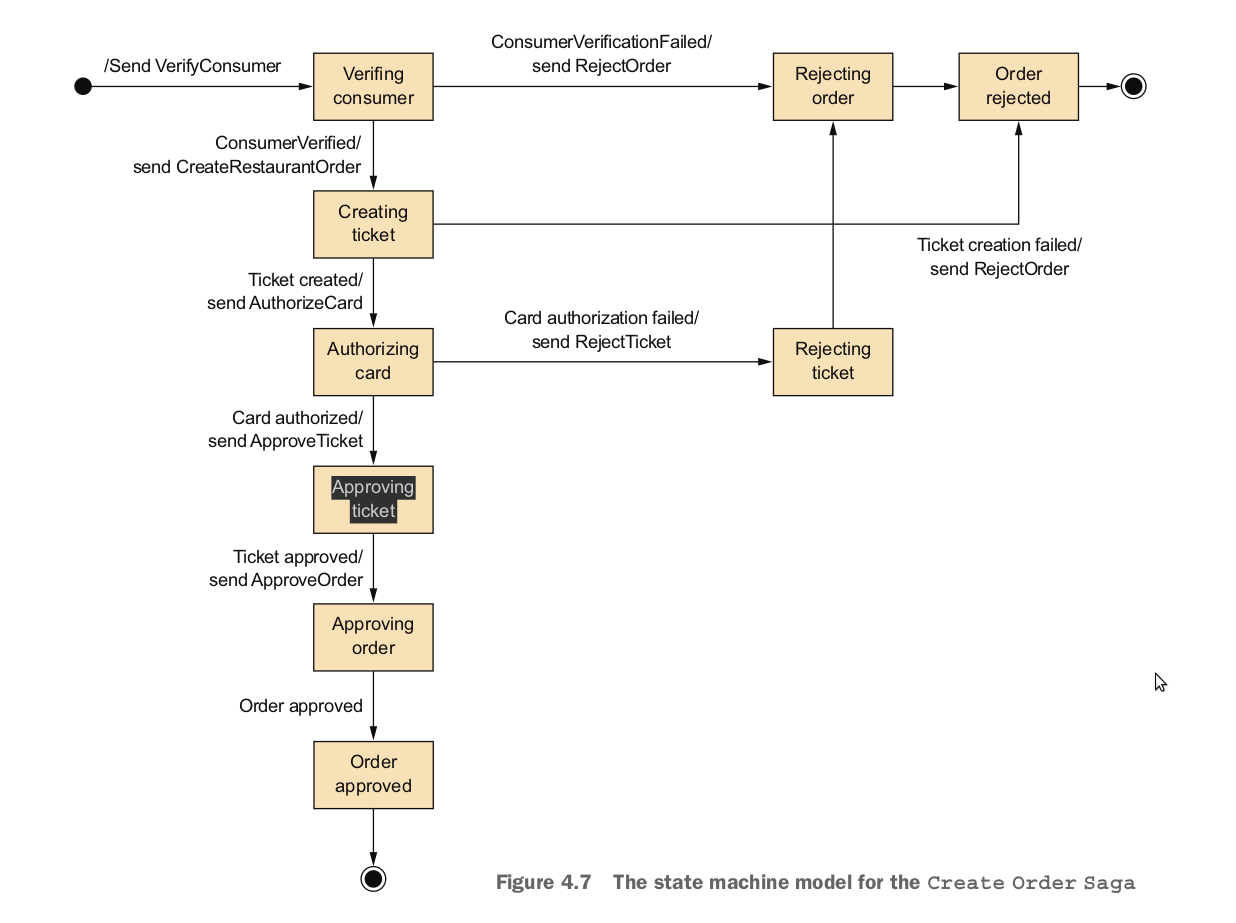
Benefits
- Simpler dependencies: doesn't introduce cyclic dependencies
- Less coupling
- Impoves seperation of concerns and simplifies business logic
Drawback
- Centralizing too much business logic in the orchestrator
Handling lack of isolation: anamolies
- Lost updates: One saga overwrites without reading changes made by another saga.
- The first step of the Create Order Saga creates an Order .
- While that saga is executing, the Cancel Order Saga cancels the Order .
- The final step of the Create Order Saga approves the Order .
- Dirty reads: dirty read occurs when one saga reads data that’s in the middle of being updated by
another saga- Consumer Service —Increase the available credit.- Order Service —Change the state of the Order to cancelled.- Delivery Service —Cancel the delivery.
The structure of a Saga
- Compensatable transactions: Transactions that can potentially be rolled back using a compensating transaction.
- Pivot transaction: The go/no-go point in a saga. If the pivot transaction commits, the saga will run until completion
- Retriable transactions: Transactions that follow the pivot transaction and are guaranteed to succeed.
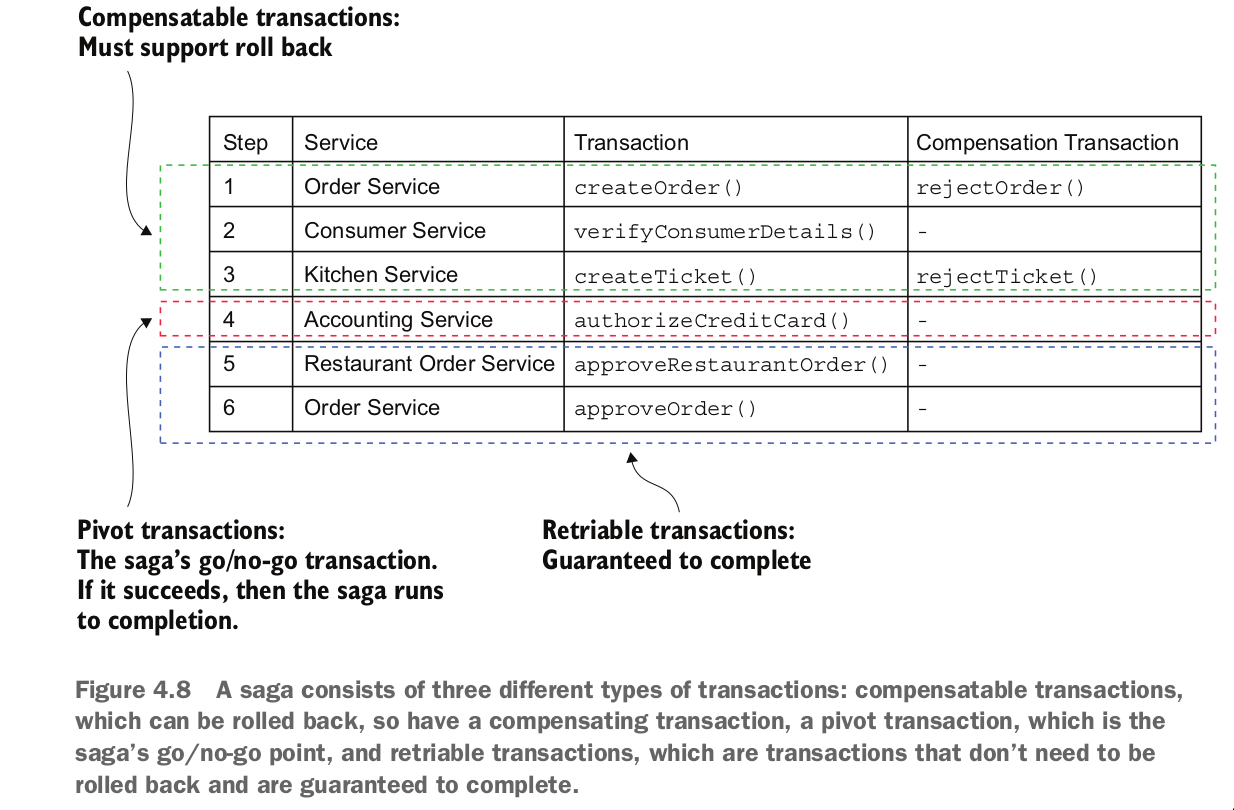
The OrderService class
Is a domain service called by the service's API layer. It's responsible for creating and managing orders
